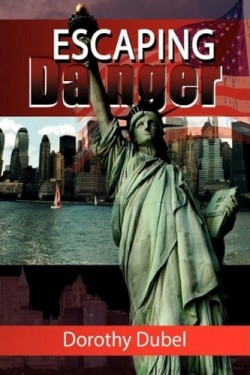Escaping Danger
A Polish jeweler and his wife escape Krakow as Nazis take over their country. Clever planning and quick thinking help them as they travel into the heart of Germany to catch a ship bound for America. Escaping Danger follows them as they begin their new lives as an immigrant family in Buffalo, New York.
The novel is broken into three sections—“Franceszka,” “Anastasia,” and “Celia”—named after the three characters that dominate the family. All are bright, beautiful, and strong. Influenced by their Polish heritage and their status as American citizens, each woman faces the challenges of her life differently. Although her husband plans their escape from war-torn Eastern Europe, it is Franceska’s wit, charm, and command of the German language that gets the escaping couple out of one dangerous scrape after another. Her headstrong daughter, Anastasia, is the opposite—her life is a series of disasters. She moves from a rebellious child to an unwed mother to the wife of a cruel Russian vodka brewer to a widowed congresswoman. Although she was raised by her grandparents as their own, Anastasia’s love child Celia grows to be a sensitive girl who longs to know the identity of her father.
Escaping Danger is an overly long and awkward piece, but it is peopled with intriguing characters that charm, frustrate, and alarm—just like real people do. Although the author proclaims the book to be fiction, some of the main characters share her last name and the book includes a photo of a band that seems to represent real people. The book feels like a composite of family stories—handed down from one daughter to the next—with a little romance and drama thrown in for effect. This makes the story enjoyable on one level, yet it rambles and includes pages and pages about characters that have no relationship to the main plot. For example, the book begins with a long story about Polish farmers who are surprised by a young soldier who has taken refuge in their basement. Ultimately, the story of Yuri and Amelia and the wounded soldier delay the introduction of the main characters until page 52.
As historical fiction, the book has several serious flaws. The author confuses events in time—sometimes referring to “flapper” dresses worn by Anastasia who was supposedly born long after the end of World War II. Occasionally, she refers to the war as World War I, but specifically identifies some German bullies as Nazis. Characters discuss the work camps of World War II, while their daughter refers to prohibition as a current event.
Despite its problems, Escaping Danger will find an audience with women and young adults. The heroines are likeable and their life circumstances will resonate in immigrant towns like Pittsburgh, Cleveland, and Buffalo.
Disclosure: This article is not an endorsement, but a review. The publisher of this book provided free copies of the book and paid a small fee to have their book reviewed by a professional reviewer. Foreword Reviews and Clarion Reviews make no guarantee that the publisher will receive a positive review. Foreword Magazine, Inc. is disclosing this in accordance with the Federal Trade Commission’s 16 CFR, Part 255.

